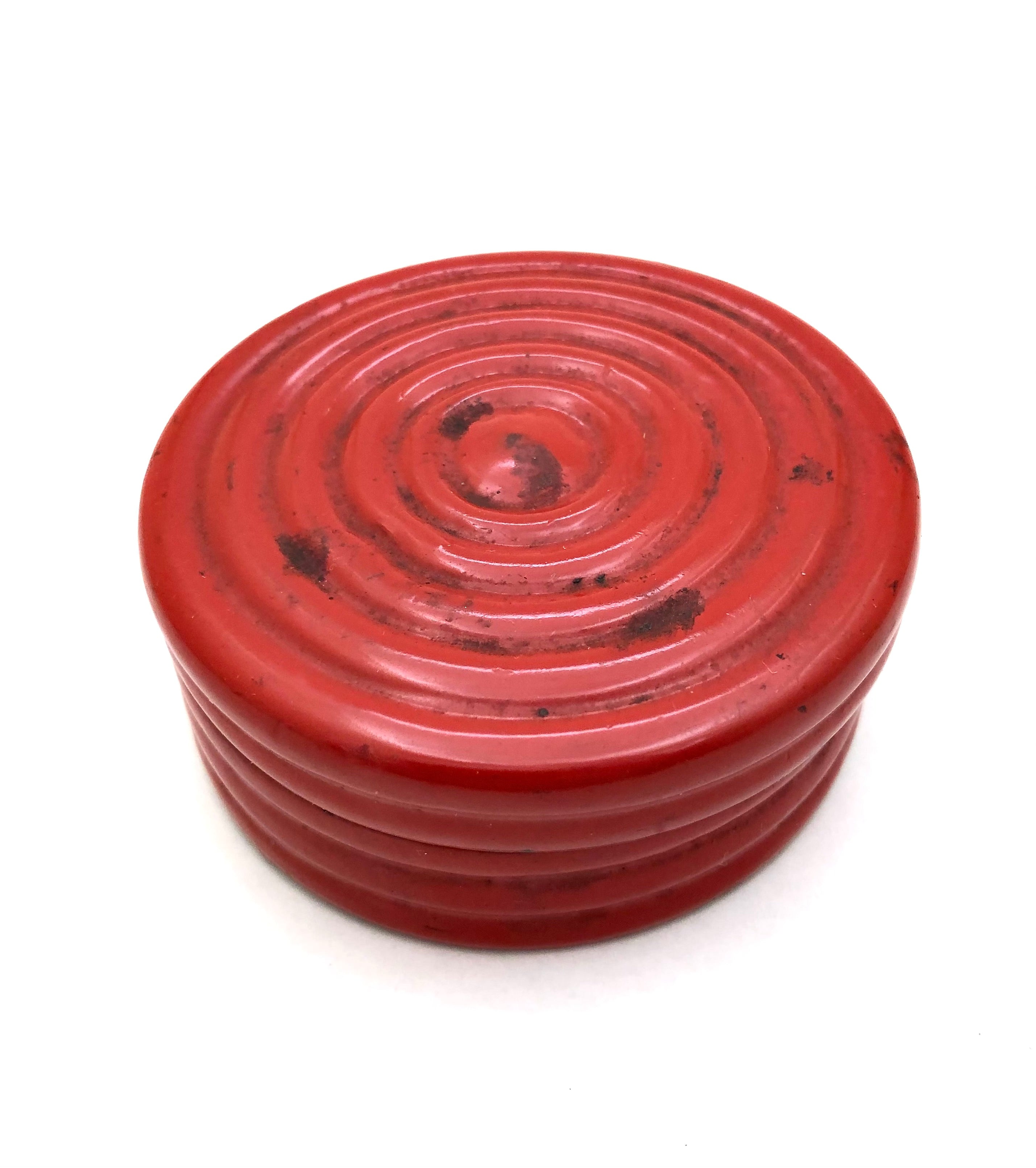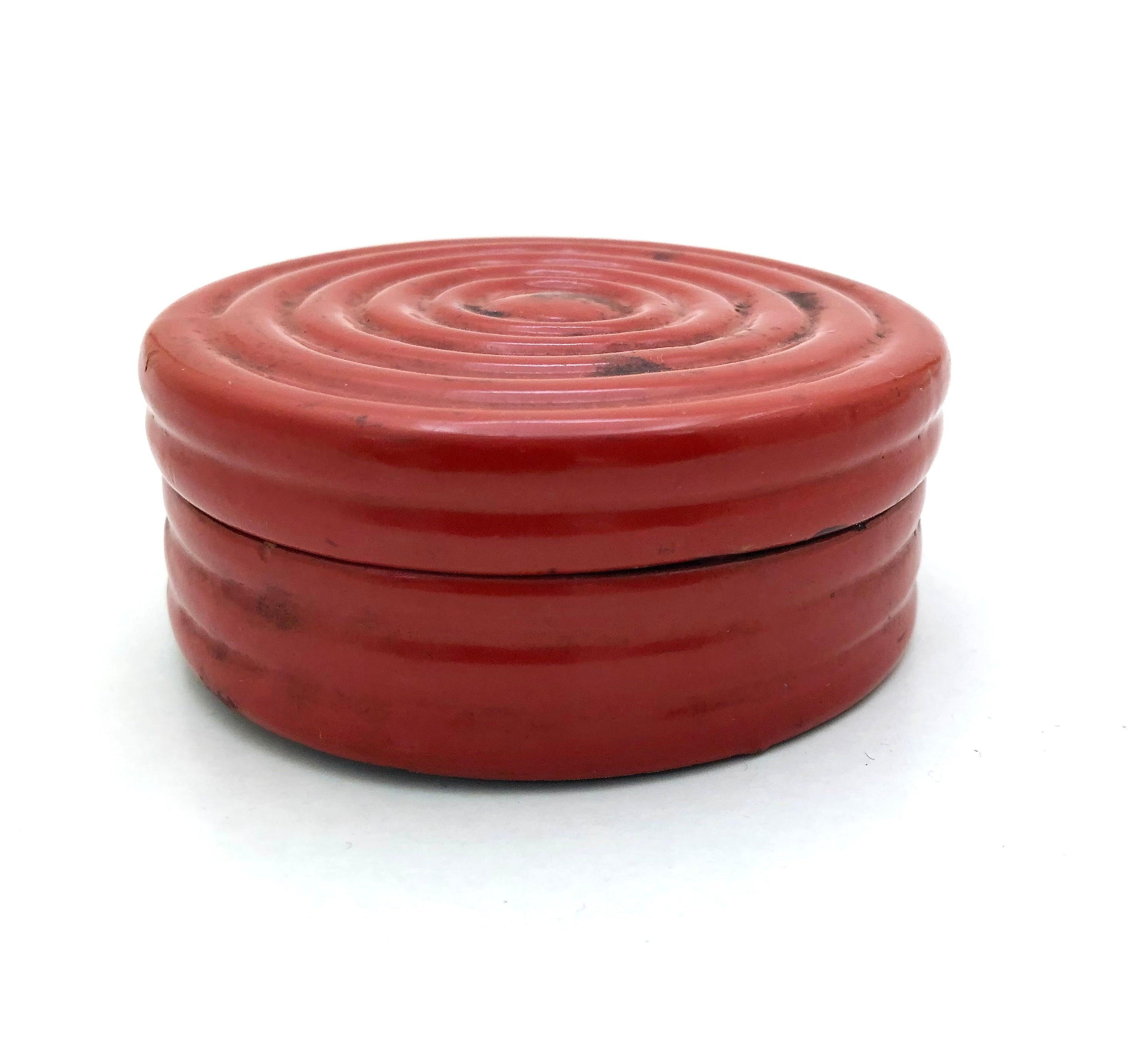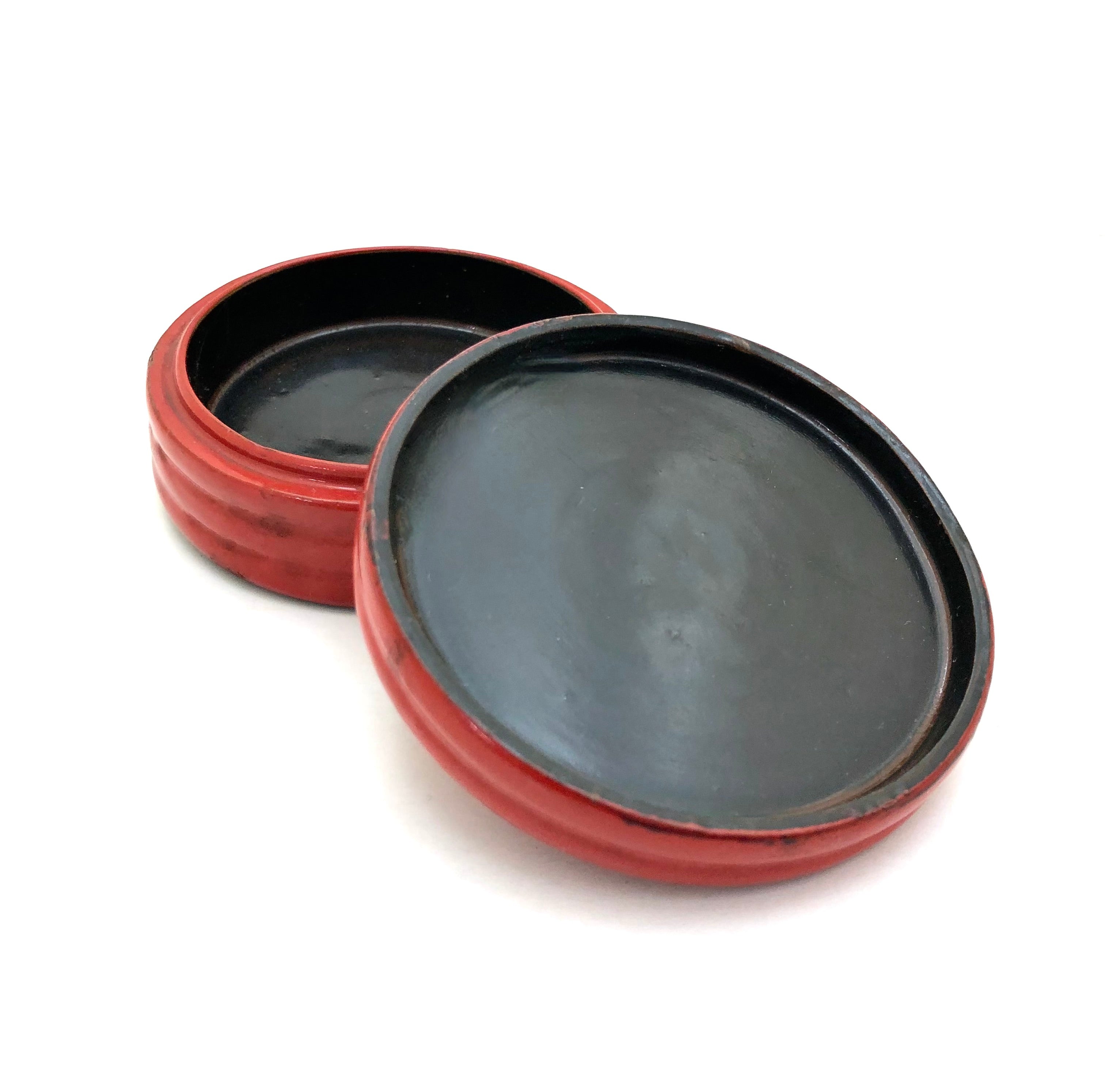


Vintage Japanese Negoro Kogo (Incense) Box
Dimensions: 1-3/8”h x 3-1/8”dia.
This is an antique Japanese Buddhist altar fitting, incense container Kogo, (a small container with a lid). This is for keeping powder-type incense (Shoko). It is also used in tea ceremonies and Buddhist ceremonies holding cone-type incense. This particular piece is finished in vermillion red lacquer on wood with a deep swirl design throughout the lid and body. The interior is finished in black lacquer. As with most lacquer of this period, it is unsigned.
Incense arrived in Japan beginning with Buddhism in the sixth century. Incense experienced in temples during Buddhist ceremonies must have inspired Japanese (who could afford it) to burn incense in their homes, not only to commemorate ancestors, deities, and important life events, and to show they were sophisticated. Houses were scented, clothes were hung in ways and places to absorb incense aromas, kimono were stored with incense packets to keep away “critters” and hair was perfumed. Powdered incense was considered "cleansing”, and was used on the palms, head, and sprinkled on floors (a great practice for temples that required a 'no-footwear' policy), and used today for meditation and to calm the mind. Elaborate containers of all sizes and materials were handcrafted honoring the importance of incense throughout the Asian cultures.
NOTE: For more information about Japanese boxes and lacquer see our blogs: https://mingeiarts.com/blogs/celebration-of-mingei-journey-through-japan/kogo-incense-containers-open-the-atmospheric-paths-of-creativity-socialization, and https://mingeiarts.com/blogs/celebration-of-mingei-journey-through-japan/lacquerwork-an-important-intangible-ancient-art, as well as https://mingeiarts.com/blogs/celebration-of-mingei-journey-through-japan/the-craft-of-the-japanese-bako-a-box-needs-a-purpose.
Condition: Original excellent undamaged condition exhibiting an aged patination with minimal imperfections related to daily use. “As is” means the object has not been restored and retains the original craftsmanship with little if any age deterioration.
